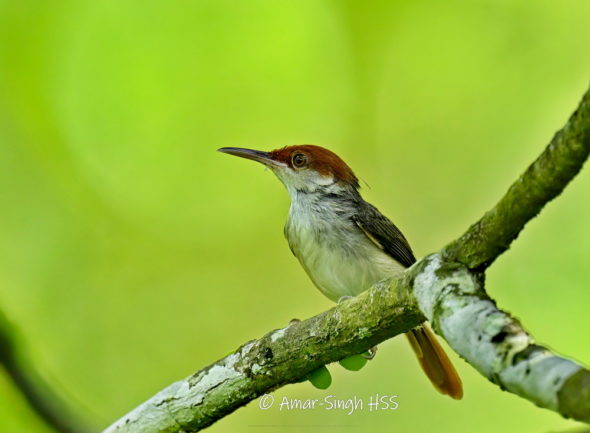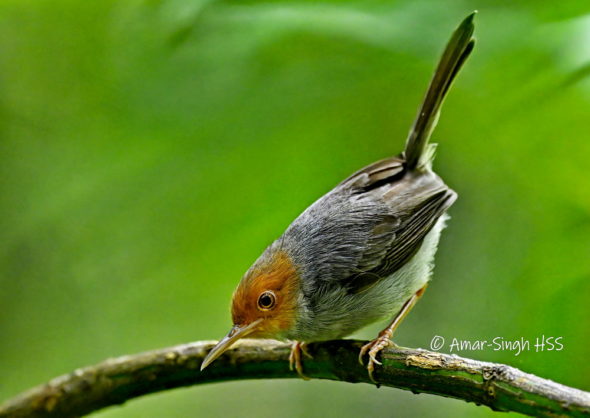This short note is stimulated by discussion with Dr David Wells about ‘back-mangrove’ bird species after my recent post on mangrove mixed foraging parties.
I had noted that there was greater diversity of species at the Matang Mangrove Forest Reserve, Perak compared to that found at mangrove sites located on the coast like Bagan Datuk, Perak. The Matang mangrove has an area of about 40,000ha and much is extended further inland on brackish rivers; it is the largest mangrove ecosystem in the peninsula.
David commented that some bird species are “essentially back-mangrove species” and they are “pushed out from the coast by bunding and clearance of that vegetation zone”. He went on to say that “In my estimation, back-mangroves are critical to at least half of all mangrove-recorded birds. Their loss is out of all proportion to their relative area.”
There are no clear definitions for ‘back-mangrove’. “In mangrove forests, 3 zones are recognized: the mangrove proper, the back-mangroves and the slightly or not saline soils.” “The back-mangrove is a bushy, discontinuous vegetation type with Avicennia here and there and few other halophytes species” (see Reference 2).
I have been reflecting on this, looking at my observations of birds at various mangrove sites and reading up on this issue. The government has replanted mangrove on the coast but only as a break or protection against possible tsunamis. This has meant a small fringe of mangrove forest on the coast with no sizable extension inland to form any ‘back-mangrove’ environment. This means that many back-mangrove species will not be able to thrive.
Take for example Tailorbirds.
At the Matang Mangrove Forest Reserve in Perak I am easily able to see all four lowland Tailorbird species:




Rufous-tailed and Ashy Tailorbirds tend to inhabit the interior of the mangrove forest while Dark-necked and Common Tailorbirds use the fringe and open spaces in the forest. But all are fairly easy to see and hear. This is unlike the coastal strips of mangrove forest where the predominant Tailorbird is the Ashy Tailorbird and the Rufous-tailed Tailorbird is not seen. The Common Tailorbird might be observed but more often in secondary growth or semi-urban settings.
Watson (1928) observes that “in terms of botanical richness, the back mangrove has the largest number of species and this richness is driven by the presence of many mangrove and coastal associates” (see Yang et al 2011).
Yang and colleagues (2011) describe the back mangrove situation for Singapore. They state “The lack of a functional back mangrove will severely affect plant species diversity (mangrove trees and all the other associated plants) and the availability of micro-habitats for fauna.” “Unfortunately, this type of mangrove habitat is most vulnerable to human activities because it can be easily converted into other forms that are more economically rewarding such as urban development or plantation agriculture”.
It would be prudent to advocate for undisturbed mangrove forests with large back mangrove sections. Or to push for mangrove replanting further inland/up-river. This may preserve the habitat for some species of birds.
References:
1. Wells, D.R. (2007). The Birds of the Thai-Malay Peninsula: Vol. 2 (Passerines). Christopher Helm, London.
2. Checklist of Mangrove species of South East India and Sri Lanka. http://amap-collaboratif.cirad.fr/Docs_Logiciels/Mangrove_web/defs/back-mangrove.html
3. Watson, J. G. (1928). Mangrove forests of the Malay Peninsula. Singapore: Fraser and Neave.
4. Yang Shufen, Rachel L. F. Lim, Sheue Chiou-Rong & Jean W. H. Yong (2011). The Current Status Of Mangrove Forests In Singapore. Proceedings of Nature Society, Singapore’s Conference on ‘Nature Conservation for a Sustainable Singapore’. 16th October 2011. Pg. 99–120.










One Response
Thank you Weng Chun.
Both the Rufous-tailed Tailorbirds and Chestnut-winged Babblers are fairly common at Matang Mangrove Forest Reserve, Perak. But I notice that some birds seem to have locations they prefer in that forest reserve.